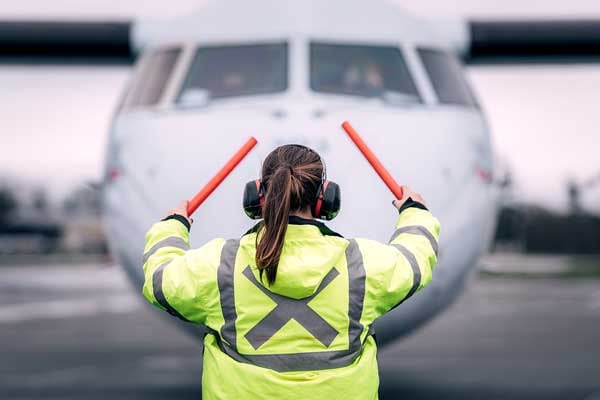Airline company wins gold in transportation category of Canada's Safest Employers awards

Jazz Aviation passengers who look through the windows of an airport terminal will see a great deal of activity. Ramp agents load and unload luggage and cargo, drive ground equipment and marshal aircraft during arrival and departure. Maintenance employees inspect propellers, fuel tanks and wings. Flight crews huddle to review their flight plans, discuss the safety briefing and conduct pre-flight checks.
What passengers do not see is a highly effective system of safety processes, policies, procedures and training behind the operations in this fleet of 117 aircraft servicing 73 destinations in Canada and the United States. The all-inclusive safety management system has proven to be a grounding force for an organization whose business revolves around defying gravity, according to Bob Palmer, vice-president of safety, quality and environment at Jazz Aviation, which is headquartered in Enfield, N.S.
While safety accountability starts with president Colin Copp, it is ingrained in the DNA of the entire organization.
“Every department owns safety — and employees consider themselves safety professionals whose common goal is to mitigate hazards,” says Palmer.
The reporting culture and safety record have stood strong recently in the face of significant employee turnover, particularly pilots. The airline has also made strides toward overcoming the challenges of managing safety for a disparate workforce of 7,500 employees scattered across the country, and incorporating local and regional differences into the national framework.
One of the key elements of the system’s success is a confidential, non-punitive reporting mechanism posted on the Jazz intranet. Employees always get responses to reports, can request face time with various investigators or managers and are recognized for their contributions to improving safety and the airline’s environmental impact. The reports go to the central investigations group, which analyzes and classifies every incident or hazard and determines whether it can drive change.Adding muscle to the culture is a harmonious union-management relationship, marked by caring and collaboration. Captain Rod Campbell, representative of the Airline Pilots Association, gets feedback from pilots and facilitates communication with management. As the employee co-chair of the policy committee, he also serves on company-wide health and safety policy meetings, chaired alternatively by management and employees.
“One example of collaboration is testing a new headset for pilots that provides the proper hearing protection, safety and comfort,” he says. “This was a joint effort of the company, union and health and safety department.”
Since pilots are responsible for safe departures, landings and operations, they and their crew adhere to strict standard operating procedures — a well-oiled machine in which roles and actions are clear and everyone relies on each other for safe operation, says Campbell.
The company also maintains on-call managers if pilots need to consult. To stay current, pilots spend four days a year on a simulator, conduct annual route checks and have regular medical exams.
Beyond operations, the safety system includes health and fitness policies and an employee assistance program. Pervasive communications are another hallmark of the safety system. In addition to publishing a magazine featuring safety stories by and about employees, the company uses social media proactively and is working on moving safety briefings from paper format to iPads.
Last year, with a rate of 0.16 lost-time injuries in 100, was the company’s best ever — and a drop of 50 per cent from 2015.
“There are no shortcuts to safety,” says Palmer. “It’s a long journey and a continuous improvement effort.”
This article originally appeared in the October/November 2017 issue of COS.





